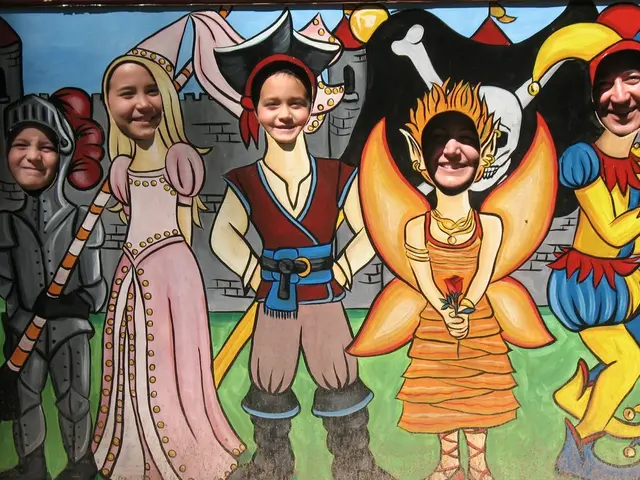Frenzied Obsession Sweeping through 19th-Century Audiences: Lisztomania
Franz Liszt, a pianist and composer, elicited intense feelings of adoration in the 1840s, leading to the invention of the term "Lisztomania." This phenomenon, reminiscent of the later "Beatlemania" of the 1960s, was unlike anything anyone had witnessed before in the entire history of music.
Liszt's stardom was influenced by the context of the time, as classical music was mostly a civilized art form until the beginning of the 19th century. However, Liszt's concerts, primarily organized by impresarios and agents of the time, transformed the landscape of music, making it a more passionate and emotional experience.
A violinist named Paganini emerged before Liszt and took the definition of "virtuoso" to a new level. Legends abounded that he sold his soul to the devil to pay for his skill. Liszt was enthralled by Paganini's violin playing in 1832, and this encounter inspired him to start practicing up to 14 hours a day.
Liszt's aesthetic was quintessentially romantic, set against a backdrop of new ideas, longing, passion, and terror in a post-French revolution world. His orchestral compositions, including the Faust Symphony, are filled with passion, fire, and emotion, paving the way for the hyper romanticism of the late 19th century.
Liszt's magnetism was likened to that of poet Lord Byron, who was also known for mass adoration, affairs, and scandal. Fans of Liszt wore his portrait on brooches, fought over locks of his hair, and attempted to obtain broken piano strings and coffee dregs to make trinkets. They often described him as a god.
Before Liszt, there were a few examples of rock-star type behavior, such as a musical duel between Mozart and Clementi and the fame of countertenor and diva Farinelli. However, Liszt's adoration was on a scale never seen before, with Heinrich Heine, a German writer, describing the behavior of Liszt's fans as a "veritable insanity" that had spread throughout Europe.
Sadly, Liszt died before the age of recordings, but his compositions, such as the 19 Hungarian Rhapsodies, give us a sense of his virtuosic prowess. The second Hungarian Rhapsody even became popular through its inclusion in an episode of Tom and Jerry, inspiring many musicians like Lang Lang to take up the instrument.
Franz Liszt's life and career were marked by passion, innovation, and a level of adoration that continues to be unparalleled in the world of classical music. His legacy lives on in the hearts of musicians and fans alike, a testament to his enduring influence.
Read also:
- Fitbit Versa 4 Experiences Continuous Price Drops on Amazon
- Asthma Diagnosis: Exploring FeNO Tests and Related Treatments
- Impact, Prevention, and Aid for Psoriatic Arthritis During Flu Season
- Government Official Shelar Urges Innovators as Lions Clubs Emphasize Annual Investment of Rs. 500 Crore in Local Communities








